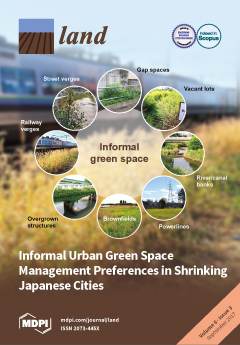Resources
Displaying 1976 - 1980 of 2258Fire Data as Proxy for Anthropogenic Landscape Change in the Yucatán
Fire is one of the earliest and most common tools used by humans to modify the earth surface. Landscapes in the Yucatán Peninsula are composed of a mosaic of old growth subtropical forest, secondary vegetation, grasslands, and agricultural land that represent a well-documented example of anthropogenic intervention, much of which involves the use of fire. This research characterizes land use systems and land cover changes in the Yucatán during the 2000–2010 time period.
Integrating Modelling Approaches for Understanding Telecoupling: Global Food Trade and Local Land Use
The telecoupling framework is an integrated concept that emphasises socioeconomic and environmental interactions between distant places. Viewed through the lens of the telecoupling framework, land use and food consumption are linked across local to global scales by decision-making agents and trade flows. Quantitatively modelling the dynamics of telecoupled systems like this could be achieved using numerous different modelling approaches.
Efficiency of Conservation Agriculture Production Systems for Smallholders in Rain-Fed Uplands of India: A Transformative Approach to Food Security
With challenges from global climate change, it is imperative to enhance food production using climate-smart technologies and maximize farm efficiency. Fifty-six households in Rudhiapada and Badamahulidiha, Odisha, India were selected to evaluate farmers’ efficiency using conservation agriculture (CA) cropping system practices. Data envelopment analysis (DEA) and regression analysis were used to estimate farmer efficiency and the determinants of yield.
Understanding Pollinator Habitat Conservation under Current Policy Using Economic Experiments
Pollinators provide critical ecosystems services vital to the production of numerous crops in the United States’ agricultural sector. However, the U.S. is witnessing a serious decline in the abundance and diversity of domestic and wild pollinators, which threatens U.S. food security. In response, the U.S. Department of Agriculture has created the Pollinator Habitat Initiative (CP-42) to induce landowners to create quality habitat for pollinators by planting beneficial crops and wildflowers on Conservation Reserve Program (CRP)-eligible land.
Wolf and Bear Depredation on Livestock in Northern Sweden 1827–2014: Combining History, Ecology and Interviews
During the twenty-first century, large carnivores have increased in human dominated landscapes after being extinct or nearly extinct. This has resulted in increasing numbers of livestock killed by large carnivores. The intent of this paper is to give a land use-historical perspective on the recent livestock–carnivore conflict in boreal Sweden. More specifically we address: (1) depredation risks (livestock killed by carnivores) and (2) local knowledge of how to protect livestock from predation and whether it survived among pastoralists until the present.


